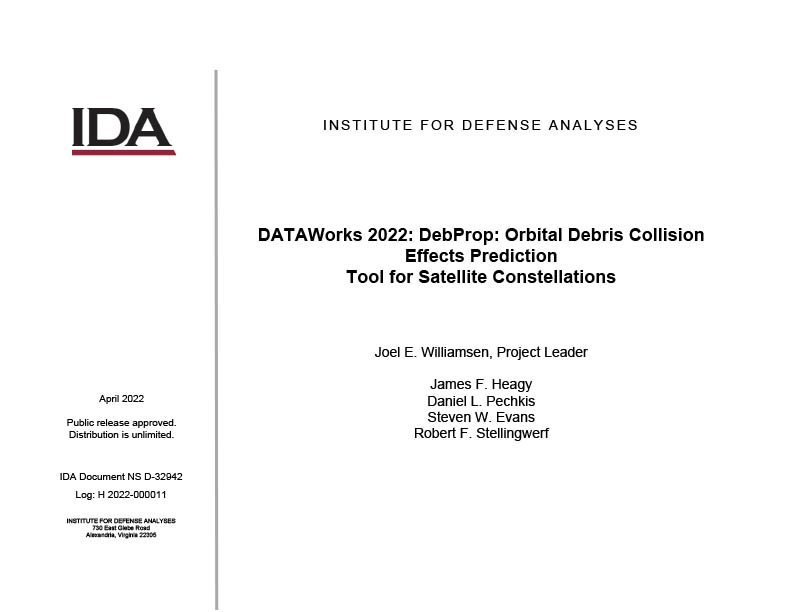DATAWorks 2022 DebProp Orbital Debris Collision Effects Prediction Tool for Satellite Constellations
April, 2022
IDA document: D-32942
FFRDC: Systems and Analyses Center
Type: Documents,
Space
Division: Operational Evaluation Division
Authors:
IDA document: D-32942
FFRDC: Systems and Analyses Center
Type: Documents
Division: Operational Evaluation Division
Authors:
Authors
Joel E. Williamsen, James F. Heagy, Daniel L. Pechkis, Steven W. Evans, Robert F. Stellingwerf
See more authors

